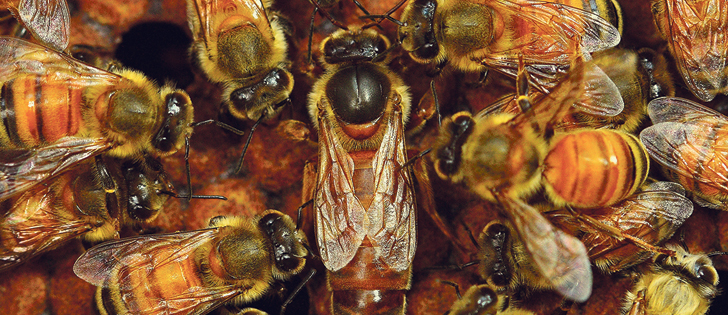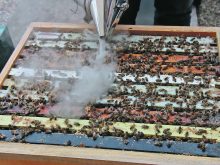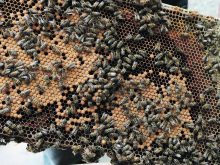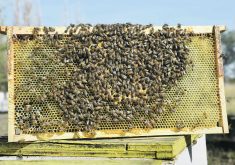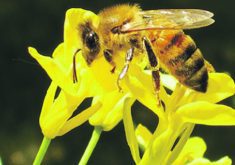For a long time, Canadian beekeepers have said that varroa mites are their number one problem and the main cause of bee colony failure.
Not this year.
In 2017, beekeepers have said that poor quality queens are the primary factor for bee colony loss.
“The most frequently cited causes in order from high to low were poor queens, followed by poor winter and spring weather, ineffective varroa control and weak colonies in the fall,” said the Canadian Association of Professional Apiculturists (CAPA), in a report published in August.
Read Also

Pakistan reopens its doors to Canadian canola
Pakistan reopens its doors to Canadian canola after a three-year hiatus.
Every year, CAPA surveys beekeepers, from coast to coast, to track winter losses and get a read on concerns within the trade.
Winter colony losses were 25.1 percent over the winter of 2016-17, higher than the previous three winters.
The winter loss percentage is the number of colonies that failed to make it through the winter, divided by the number of beehives in operation the previous year.
Varroa mites, parasites that spread disease and weaken bees, are still problematic for many beekeepers. But this year apiarists in Quebec, Ontario, Prince Edward Island and Nova Scotia said poor queens were the main cause of honeybee colony mortality.
In Manitoba it ranked second.
Steve Pernal, Agriculture Canada apiculturist in Lacombe, Alta., said the finding isn’t a shock.
Queen failure has become a common complaint in the trade.
“This is not an overnight phenomenon,” he said. “Beekeepers in Canada and the U.S. have been noticing (for a while) that queens don’t tend to last as long as they used to.”
Now, queen bees typically last a year before they are replaced. Five or 10 years ago they were healthy and productive for about two years.
“A lot of beekeepers would probably be on a cycle where they would be replacing queens almost every year,” Pernal said.
Most Canadian beekeepers im-port queens from California or Hawaii. It’s possible to raise queens in Canada but not soon enough in the season for commercial beekeepers.
“There is a huge demand for queens typically in the spring,” Pernal said.
“Part of it is just climate… you’re not going to be able to produce queens and get them mated until sometime in later June.”
Entomologists don’t know for certain why queens are more fragile today, but they identified one factor.
Queen bees mate in the first few weeks of life and they use stored semen to fertilize eggs that are laid throughout their life. Queen failure can occur when the queen doesn’t produce enough viable eggs to maintain the colony population.
A U.S. Department of Agriculture study from 2016 found that queen bees might be exposed to extreme temperatures when shipped from places like Hawaii to Western Canada.
The temperatures can, potentially, range from 8 to 41 C.
“Those (queens) exposed to extreme high or low temperatures during shipping had sperm viability reduced by 50 percent,” the USDA said, thus reducing the queen’s ability to reproduce.
Pernal has expanded upon that research and found similar results.
“We just completed an experiment where we artificially simulate those temperature extremes and then introduce the queen to (a) colony,” he said.
“It’s quite striking the differences in productivity and the symptoms we see in those colonies.”
Scientists like Pernal feel confident that temperature stress is an issue, but pesticides may also be making queens weaker.
University of Guelph scientists exposed bumblebee queens to thiamethoxam, a neonicotinoid insecticide used as a seed treatment on corn, canola and soybeans. They found that queens given higher doses of the insecticide laid smaller and less developed eggs than a control group of queens.
“Most of the work to determine levels of toxic exposure to pesticide has used honeybees as a model pollinator,” said Nigel Raine, U of Guelph pollination conservation expert. “But our findings show that bee species vary in their level of sensitivity to pesticides, which is important information that should be factored into regulatory decisions on these chemicals.”
Pernal said there is some evidence that pesticides compromise queen bee health, but more research is needed.
“We’re not that far along with research, to sort of draw a real causal link between exposure to pesticides and a reduction in queen quality.”


